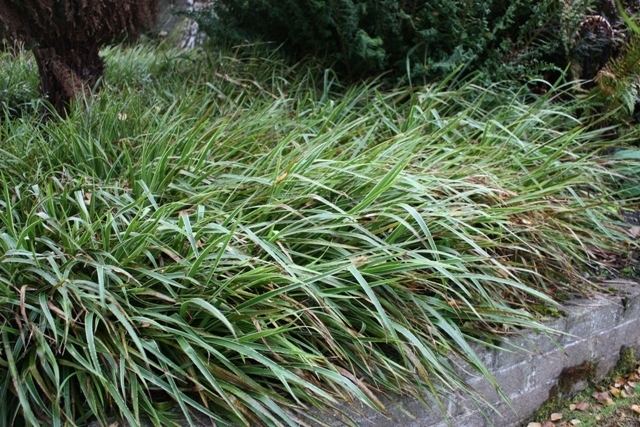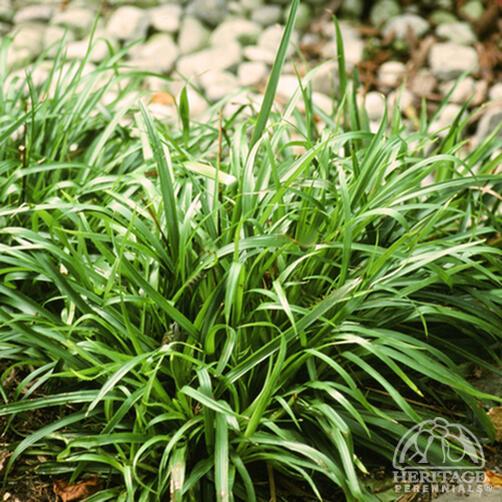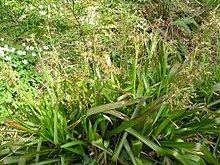Genus Luzula Rank Species | ||
 | ||
Similar Luzula, Luzula nivea, Luzula pilosa, Luzula luzuloides, Luzula campestris | ||
Luzula sylvatica, commonly known as greater wood-rush or great wood-rush, is a perennial flowering plant in the rush family Juncaceae.
Contents

Taxonomy and naming

With regards to the etymology of the binomial, Luzula could come from the Italian lucciola ("to shine, sparkle") or the Latin luzulae or luxulae, from lux ("light"), inspired by the way the plants sparkle when wet with dew; whilst sylvatica comes from silva, Latin for forest.
Description

Luzula sylvatica is the largest woodrush, with stems 30–80 centimetres (12–31 in) high. It forms clumps of bright green leaves which are glossy, flat, linear, about 10–30 centimetres (3.9–11.8 in) in length and 1 centimetre (0.39 in) wide; its leaves remain green or at least greenish throughout winter. The leaves can also help to differentiate the plant from similar-looking plants in the closely related Juncus genus, as scattered white hairs can be found along the leaf edges. Its tepals are 3–3.5 millimetres (0.12–0.14 in), with flowers which grow in groups of 3 or 4. From mid-spring to summer, L. sylvatica produces flowers in open panicles which are very small, chestnut-brown in colour and can be found in dense and lax clusters. L. sylvatica is sometimes stoloniferous.

Luzula sylvatica is both anemophilous and entomophilous, in that it can be pollinated by either wind or insect. L. sylvatica's fruit is a 3-valved capsule containing three oblong seeds. Each seed is indistinctly reticulate, often with a caruncle (a basal or apical appendage); seeds tend to germinate close to their parent plant.
Distribution and habitat

Luzula sylvatica has a wide distribution, and is native to Europe (the European temperate element of flora ) and southwest Asia - including the British Isles where L. sylvatica populations are widespread stable, apart from a decline and in central and south east England. There is one record of L. sylvatica from Washington State, United States of America.

Usually growing in partial to full shade, Luzula sylvatica tends to grow on acidic soils in damp habitats. L. sylvatica can be found on stream banks and well-drained, open woodland, as well as in open ground and rock ledges and peaty heath moors. Despite its preference for acidic soils, it can tolerate most soil pH levels.
Ecology
The leaves of Luzula sylvatica are picked in winter by golden eagles to line their eyries. The flowers and seeds of L. sylvatica are also the sole food source for the larvae of the Coleophora sylvaticella moth.
Uses
Luzula sylvatica is commonly used in horticulture — its thick, patch-forming habit (which allows the plant to act as a weed suppressant), hardiness, as well as the ability to grow in shade and damp soils being particular boons; L. sylvatica is commonly used for ground cover and/or as an ornamental grass.
